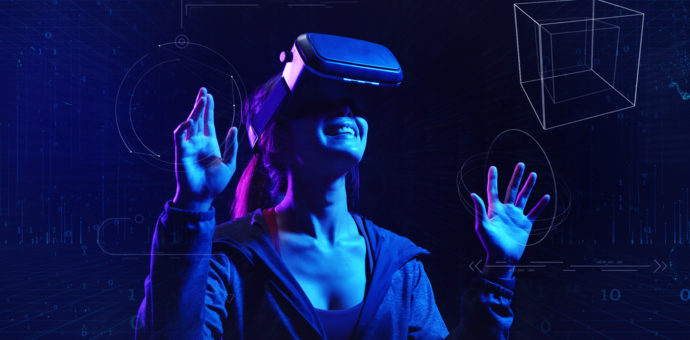A kind of augmented virtual reality that allows people to have an immersive experience on a certain platform. This is a (simplified) definition of the metaverse, a solution that has been adopted in the most diverse segments, from Facebook (which is now Meta and offers applications for social interaction simulating the virtual environment) to the most different tools. For example, a new platform (Earthly) allows organizations to interact with the ecosystem in which they operate and view alternatives to quantify the reduction or compensation of carbon emissions.
The solutions based on the metaverse are the most diverse, although currently, the big highlight is the games’ universe. But the technology goes far beyond this by providing alternatives to problems in the physical world. Moreover, although the concept seems new, the metaverse has very little that is new.
“Metaverse is the idea of a virtual reality that overlaps with physics”, summarized Paradigma Education co-founder Felipe Sant’Ana, during an event promoted by ABFintechs. According to him, this trend is not new. “Who doesn’t feel uncomfortable losing photos on their smartphone, important files on their computer or even their crypto key?” he asked, mentioning that these are tangible evidence of how the virtual universe is already inserted in a dominant way in the physical reality.
Pandemic accelerated the concept of metaverse
With the need for social isolation resulting from the pandemic, virtual reality applications were expanded. In the corporate universe, meetings (in which it is possible to interact with other participants and even walk side by side in virtual environments) were the main novelty, but not the only one.
Industries from various segments began to use the resource to gain efficiency and reduce costs. One example is the automotive sector, which adopted virtual prototypes for the development of projects on the factory floor during the pandemic.
In the areas of health and education, the development was also quite extensive. Imagine medical students learning about the human body at a distance and remote surgeries in a virtual prototype?
These are some of the most concrete applications of the metaverse, but the gaming industry is still the most prominent. In online games, the metaverse is increasingly present to provide the player with the best immersion experience.
NFTs are a source of income in the metaverse
In the universe of games that integrate the metaverse, each item obtained – an avatar, character, or other game resources such as weapons, clothing, land, etc. – is unique. This means that, unlike in traditional games, only one player will own the item in question, increasing its value and making it highly disputed by other players.
This is the concept that has made play-to-earn games a source of income for many people. Whoever has the item has the value tied to it. And to ensure the originality and authenticity of this item, non-fungible tokens (NFTs) were necessary.
“Increasingly, metaverse applications are blending with the real world. Whether through games, whose investments exceed US$ billions, which have even become a source of income for many users or through other applications, such as health and education, these new tools now have economic and social value”, said Felipe Sant’Ana.
According to him, the tendency for the metaverse is that more and more simulations are close to reality, being difficult to dissociate. “We have, ahead of us, a new horizon of business models and ways of creating online content, which was not possible or feasible before”, he said. Therefore, creativity for new solutions will be the limit.







